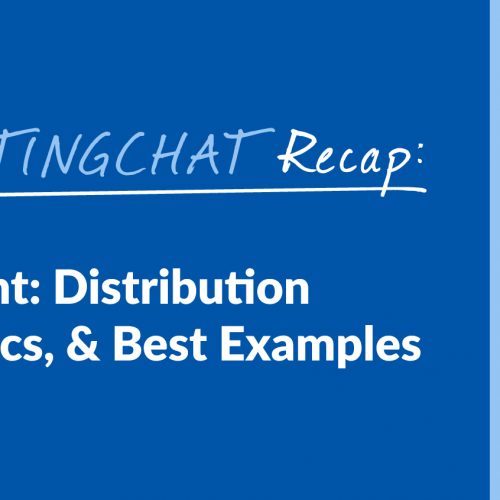What is Evergreen Content and How to Use it to Build Your Brand
Search engine optimization takes time. It’s like building a house where each new addition strengthens your construction. Every blog post you write, and website page you add gives you more authority and ranking potential. Today we dive into strategies to build your evergreen content. Covering trending topics and the latest news and stats is vital for remaining relevant, but those topics don’t rank in search engines for very long. Those topics receive a considerable boost initially, but you’ll see traffic die down as people move on to the next greatest thing. Evergreen content is the opposite of that. This is a cornerstone topic that doesn’t go out of style. It just keeps generating more traffic. It ages like fine wine, becoming stronger the longer it’s alive. But, like fine wine, evergreen content requires care to hold its value. We’ll explore what evergreen content is and how you can use an evergreen content strategy to build a solid online brand. What Exactly Is Evergreen Content? Evergreen content remains relevant and doesn’t go out of style. It’s the exact opposite of breaking news and trending topics. It doesn’t expire, and people don’t lose interest in the topic over time. Here are a few examples of evergreen content: Educational Guides: How-to articles, tips, and steps for completing tasks are all examples of evergreen content. People consistently need tutorials for completing assignments and ways to sharpen their skills. Fact Articles: Facts remain relevant for a long time unless new information emerges. For example, a post on the history of newspapers won’t change much over the years since no one is taking time machines to the past and changing history. Think about encyclopedia articles. People continually consult this content to learn more about a topic or cite research in an industry. Industry Resources: Industry guides, case studies, and glossaries are necessary for employees to understand their industry and find solutions. Here are some examples that are NOT evergreen content: Current Events: If something is breaking news, readers will probably lose interest as soon as the next big event occurs. Suddenly, that article sounds outdated. Reviews: People and businesses change over time. Just because Suzy loved a restaurant in 2014 doesn’t mean that the restaurant still offers the same quality food ten years later. People who want reviews on businesses, media, and products are usually only interested in recent reviews and testimonials. Statistics: Statistics have a varied shelf life. For example, statistics from medical research studies done five years ago can still be relevant today because research studies are costly and don’t receive regular updates. However, social media usage statistics from five years ago are outdated and usually have a shelf-life of a year or two because that’s a fast-paced industry. Technology: Content referencing technology usually has a short life because technology constantly changes. Something as simple as an image or mention of a smartphone can date an article since smartphones receive annual updates in appearance and function. References to how you can use technology and what technology is available will start an expiration timer ticking. Most of your content will usually be evergreen, as that will be your primary traffic driver. How to Turn Trending Topics into Evergreen Content Here’s an insider’s tip on evergreen content. You can turn your trending content into evergreen topics through regular updates. In each update, check statistics, technology changes, and current event mentions so you’re referencing the most recent updates. Here’s an example of an article Backlinko published in October 2019. Backlinko updates the article with the new year each year, updating any out-of-date statistics and adding new facts to the post. Does this work? The article’s search traffic says it does. You can see where those updates happened, as each update caused a jump in website traffic each year, keeping it relevant. Trending vs. Evergreen Content Examples Let’s look at examples of what evergreen content isn’t, followed by examples of what evergreen content is. Here’s an article that appeared in February 2022 when the Rams won the Super Bowl. Now, let’s look at this article’s traffic trends over time. You’ll notice the immediate peak when Fox Sports published the article. It was breaking news, fresh, and exciting. People everywhere were searching for Super Bowl results. However, just a few months later, it nearly flatlined. You’ll notice again that the columnist updated the article in 2023 in preparation for a new wave of searches as the next Super Bowl arrived. That update was delivered when another spike occurred. However, a year later, the article nearly flatlines again. This is not evergreen content. This is trending content. Trending content is crucial for showing you are relevant, connecting with new traffic, trending term searches, and being an authority in your field. However, trending content won’t bring in consistent website traffic. That’s why most of your website should be evergreen content. Let’s take a look at an example of evergreen content. You’ll notice first that there are no dates or breaking news information in the title. It’s a topic that has stayed relevant through the years because people are still coaching sports teams today, just like in 2015, when this article first came out. And the numbers don’t lie. The organic traffic grew after Harvard Business Review published the article in 2015. It peaked five years later! It wasn’t until it had been out for five years that you saw a traffic dip. Even in 2024, nine years later, the article still brings in a trickle of traffic. What Is the Best Evergreen Content Format? Evergreen content can appear in any online format other than social media. Here are the most popular ways to publish evergreen content: Blog Posts: Blog posts will be your SEO’s primary strategy. They usually appear on a resource or news page on your website. Visitors can search for specific topics, share posts on social media and emails, and see these articles appear in search results. You will also link to past blog articles through internal links. … Read more





